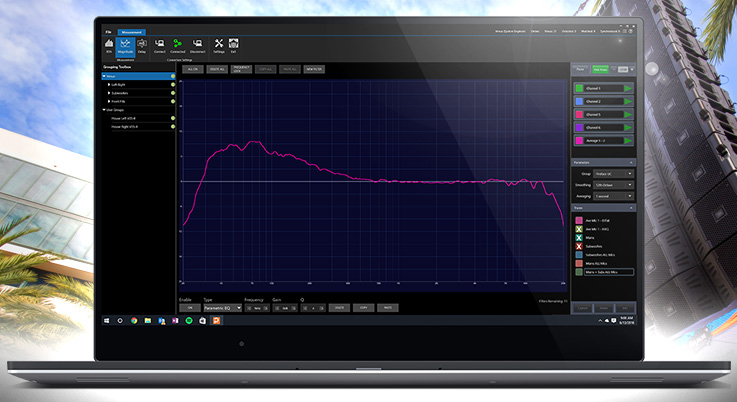HARMAN Professional Solutions Drives Tour Audio Innovation with JBL Array Link App and Key Software Updates

HARMAN Professional Solutions announced at Prolight + Sound, Frankfurt, the new JBL Array Link app for iOS and Android, plus
key updates to the Performance Manager and Line Array Calculator software applications. Designed from the ground up,
JBL Array Link is an innovative app that enables systems engineers to quickly share array suspension information and
inventory data, streamline the deployment process, and save valuable time and expense. Along with the official launch
of the highly anticipated new JBL VTX A12 line array loudspeakers, these new software tools underscore HARMAN’s ongoing
commitment to meeting the needs of modern live sound professionals.
“With any large-scale production, there comes a point where key array prediction information needs to be disseminated quickly
and accurately to crew members,” said George Georgallis, Product Manager, Tour Sound Systems, HARMAN Professional
Solutions.
“Information about array weight, dimensions and inter-enclosure suspension angles must be shared with the individuals putting
the arrays together, and any mistakes made in sharing this information can be costly and time consuming. The JBL Array Link
app is designed to eliminate these mistakes, enabling systems technicians to take critical information points for VTX arrays
and quickly share them with other crew members who also have the app,” he added.
The JBL Array Link app can receive array information in a number of ways, including reading a QR code generated by Line Array
Calculator 3 using the camera on an Android or iOS mobile device. The Array Link app automatically scans the code and uploads
the LAC3 data, which is then displayed in an intuitive fashion across the different pages of the Array Link app. This enables
users to quickly see at a glance what their array size, weight and inter-enclosure angles are. Additionally, file information
saved on the user’s phone can be shared instantly with other Array Link users via QR code or text message.
JBL Performance Manager 2.4 builds off the significant progress of Performance Manager 2.3, which included updated VTX presets
and multi-touch support, and offers complete support for VTX A12. The release includes further code optimizations to speed file
loading, as well as many other key features and enhancements.
New Array Size Compensation Filter
This new filter is designed to help front of house engineers and systems technicians better manage the LF response of VTX systems,
and tailor the array starting point to better meet their needs. Additionally, the single-parameter adjustment aspect of this
filter set gives systems engineers a streamlined path towards proper system balance.
New Virtual Venue Alignment Assist
This new tool helps to align and organize virtual systems, enabling users to more quickly build a visual representation of their
system for effective monitoring and control. In offline mode, new guidelines automatically appear and help align and organize
arrays and amp racks in the venue file. Coupled with more complete support for touch-enabled devices, this new alignment
assistance will further speed the process of system design and deployment.
JBL Line Array Calculator 3
Featuring a completely redesigned, more intuitive UI and a fully resizable, zoom-enabled display window, JBL Line Array
Calculator 3 delivers precise acoustic predictions for the response of VTX systems and offers updated mechanical reports
for physical array predictions. The venue prediction window now offers an unlimited number of planes additional virtual
measurement probes, as well as enhanced prediction tools to support frequency response averaging of multiple virtual
measurements.
Another key update for Line Array Calculator 3 is the addition of a new subwoofer prediction mode. Users can enter multiple
subwoofer clusters into the display window and predict the broadband polar response of the entire array, with variable
adjustments for container spacing, size, and arc opening angle if the user wants to calculate delay times for arc-delaying
a single or spaced array. The response of the entire subwoofer array can be predicted via a broadband frequency average, or
by looking at the polar response of the array at specific frequencies. This enables system designers to make more informed
decisions about how subwoofer arrays should be placed in venues, and aids in optimizing the arrays for peak performance.